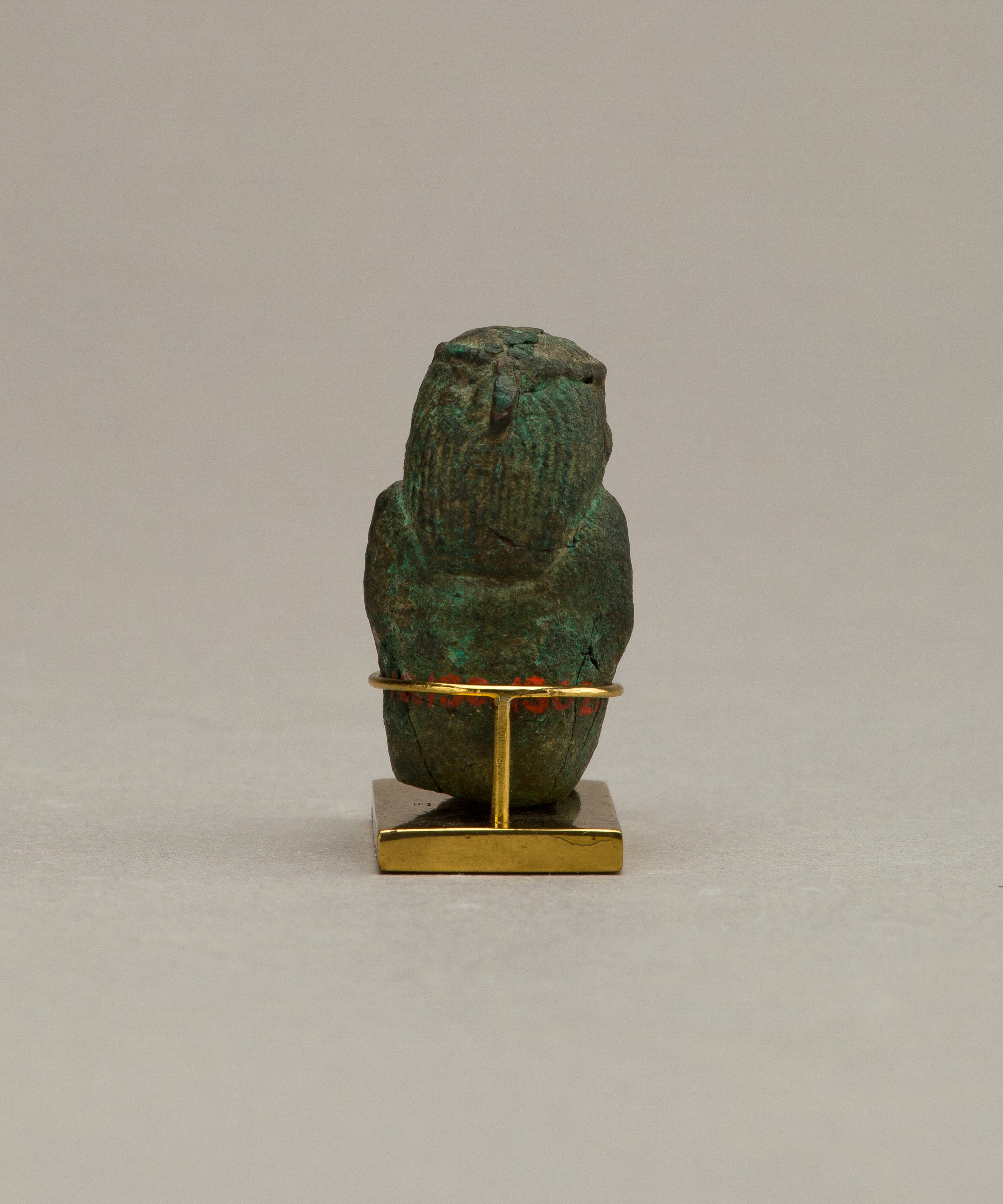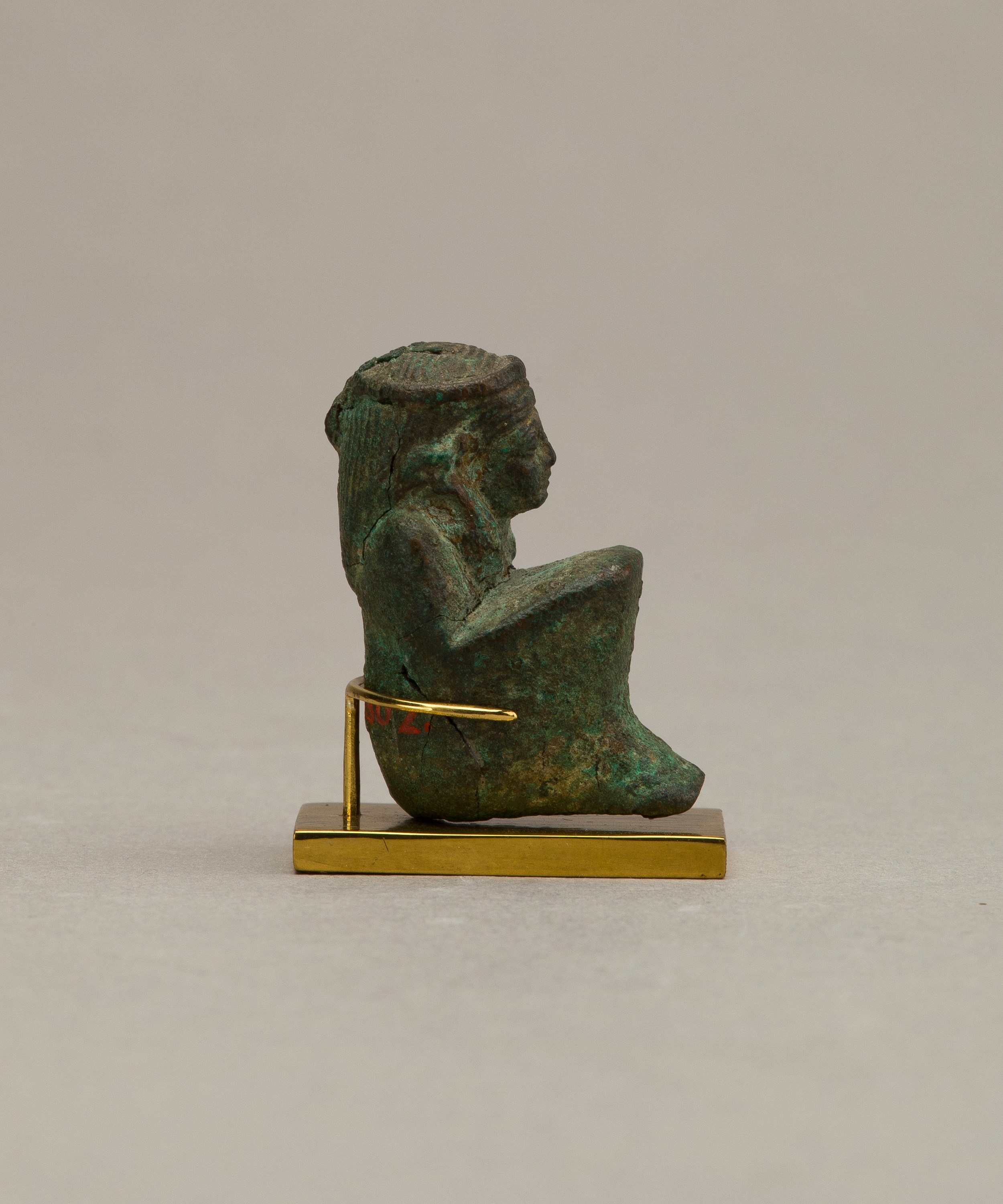Maat
Third Intermediate Period–Late Period
This small figure represents Maat, goddess of truth and justice, and embodiment of an ideal world in equilibrium. She is depicted in her typical position, seated on the ground with her knees pulled up. Traces on top of her head suggest that she originally wore an ostrich feather, signifying her name.
Small Maat figures are known as part of larger compositions, where they are usually situated in front of an ibis, as a depiction of the god Thoth. Thoth was the god of writing and wisdom and was therefore closely connected to Maat. This piece shows no evidence that it originally had a tang at the bottom to place it into such a composition, though the small Maat could have rested in a depression or been placed on a small stool. It is also noteworthy that high officials are sometimes depicted wearing a small Maat figure hung around their neck to signify that their conduct is just.
Despite the small size of the figure, the face is very nicely modelled and bears very faint remains of gold, showing that it was originally gilded.
Due to rights restrictions, this image cannot be enlarged, viewed at full screen, or downloaded.
This artwork is meant to be viewed from right to left. Scroll left to view more.






